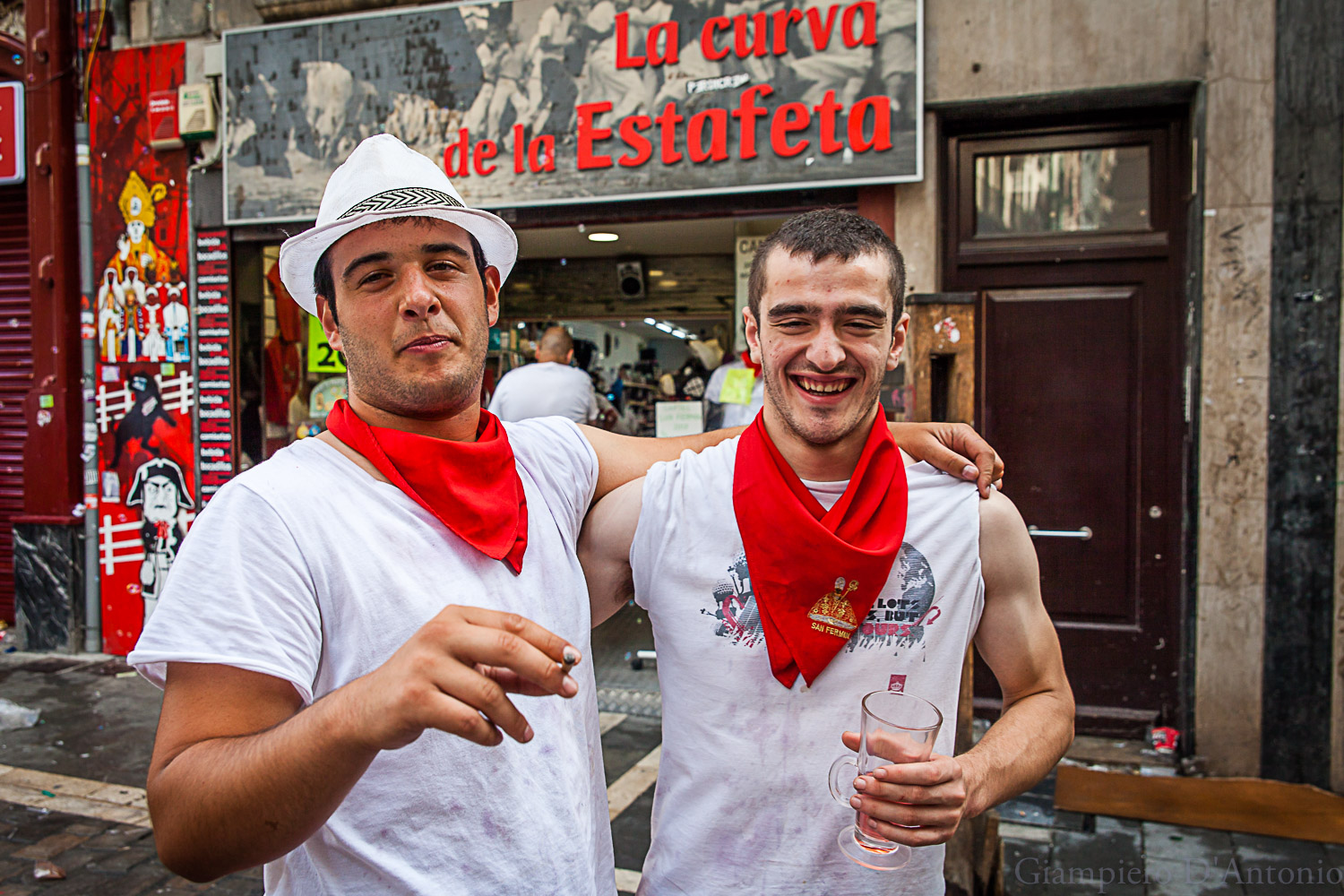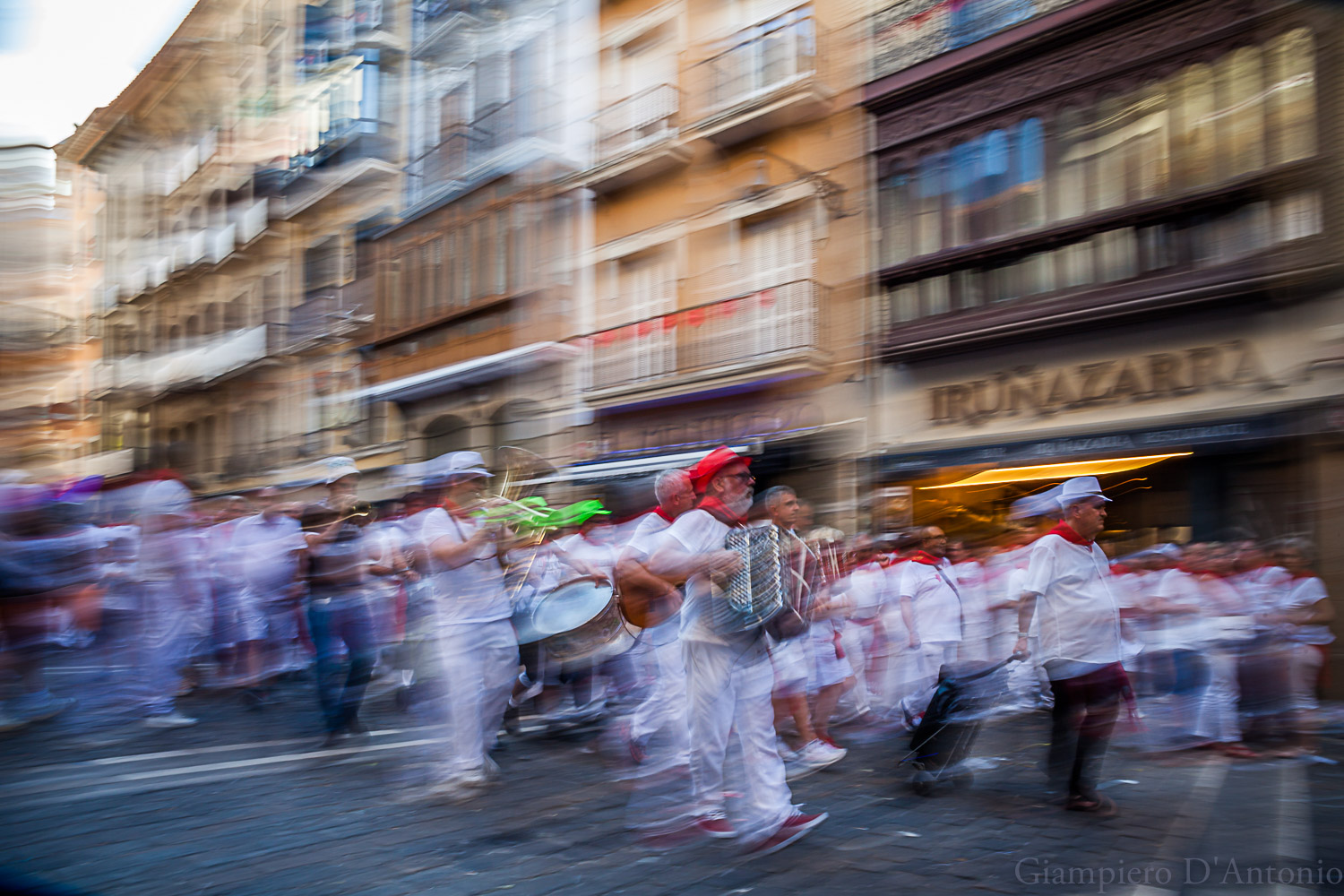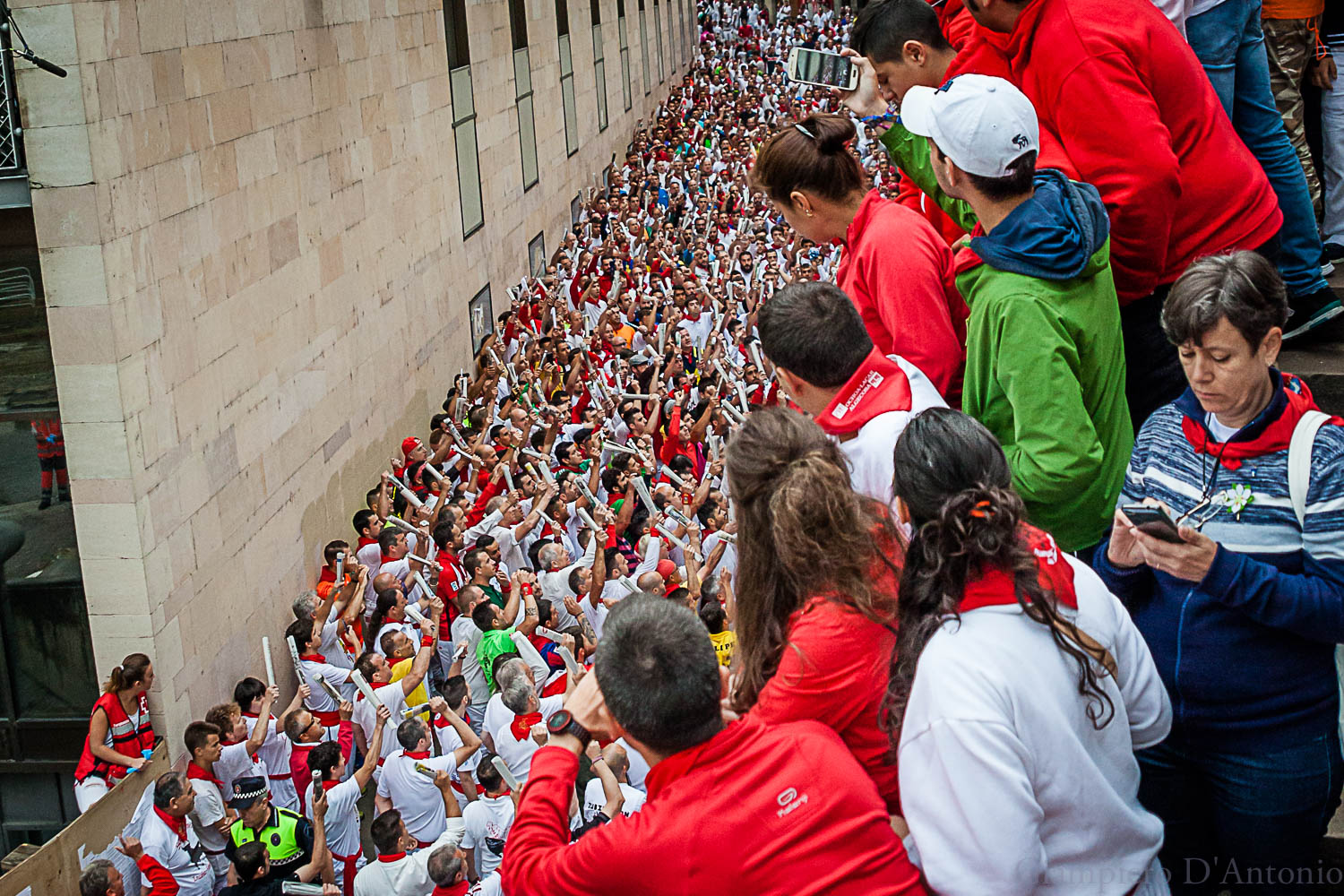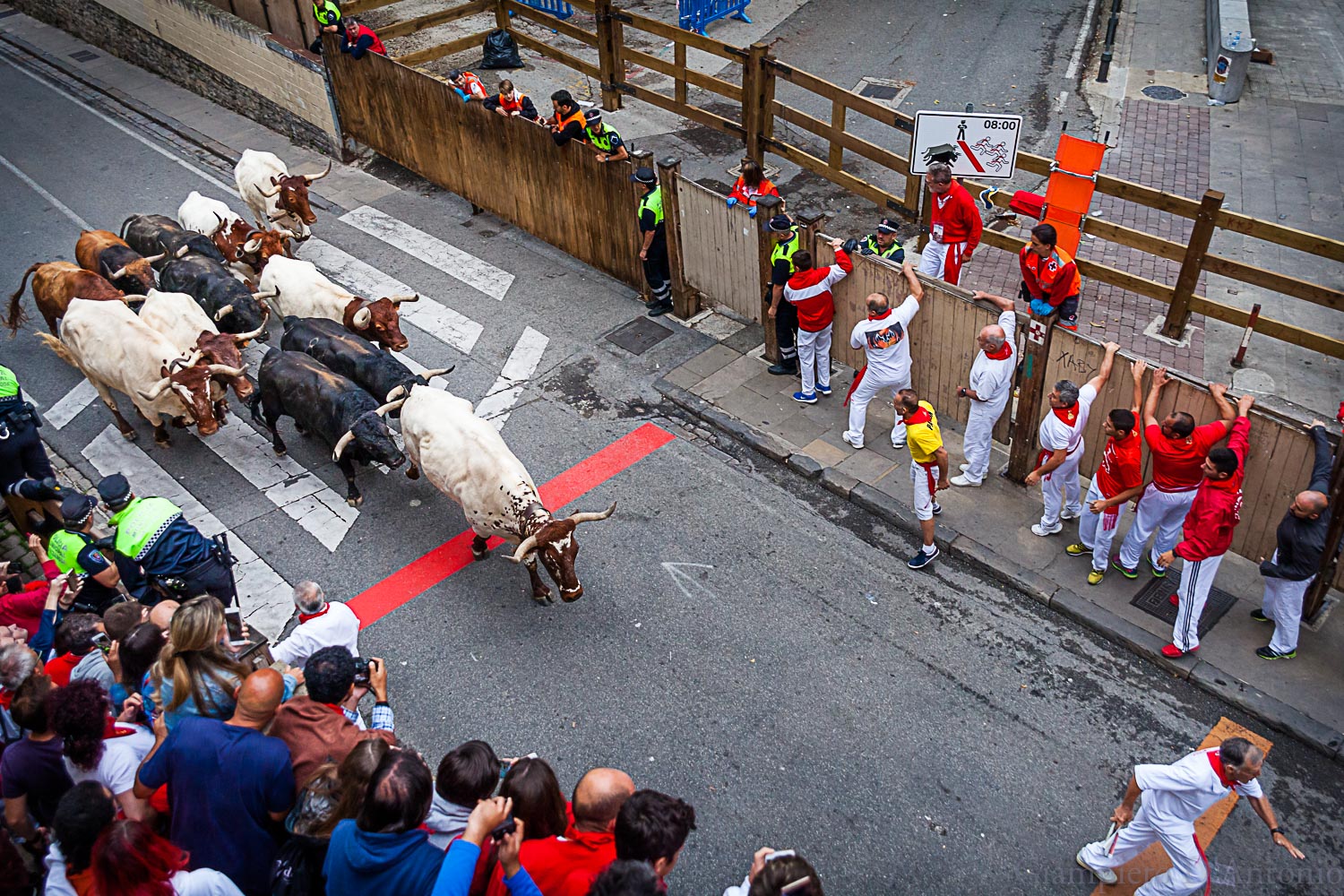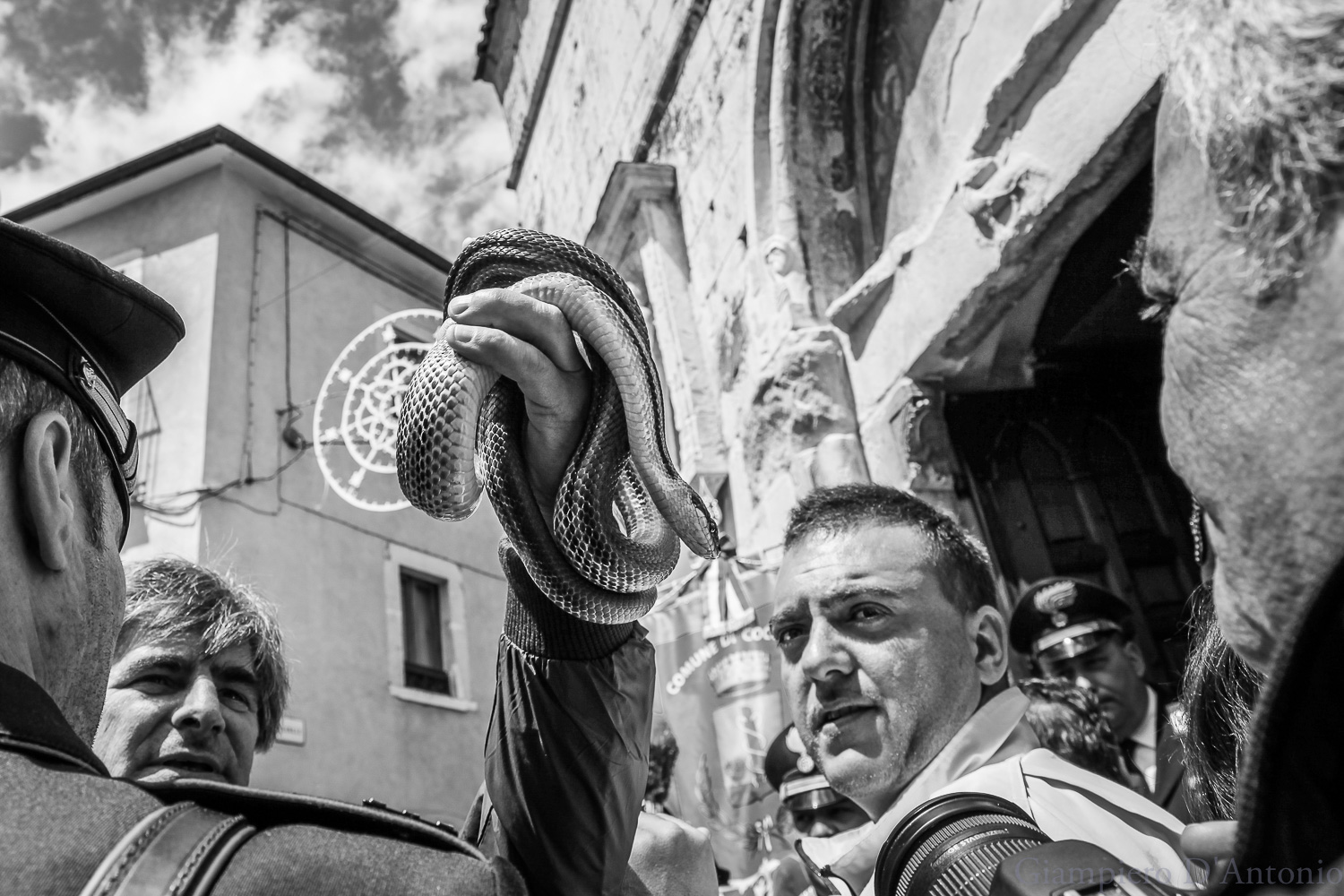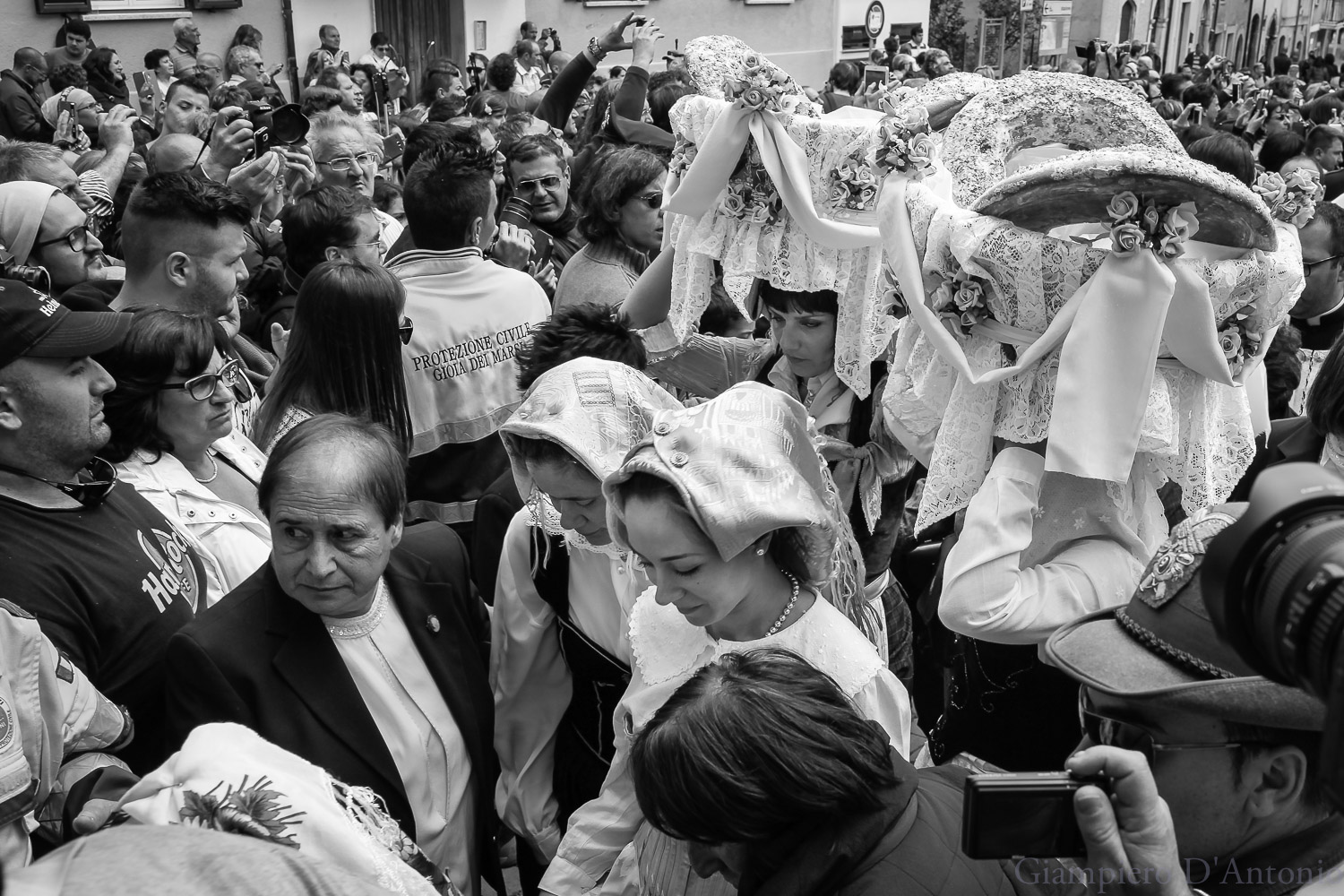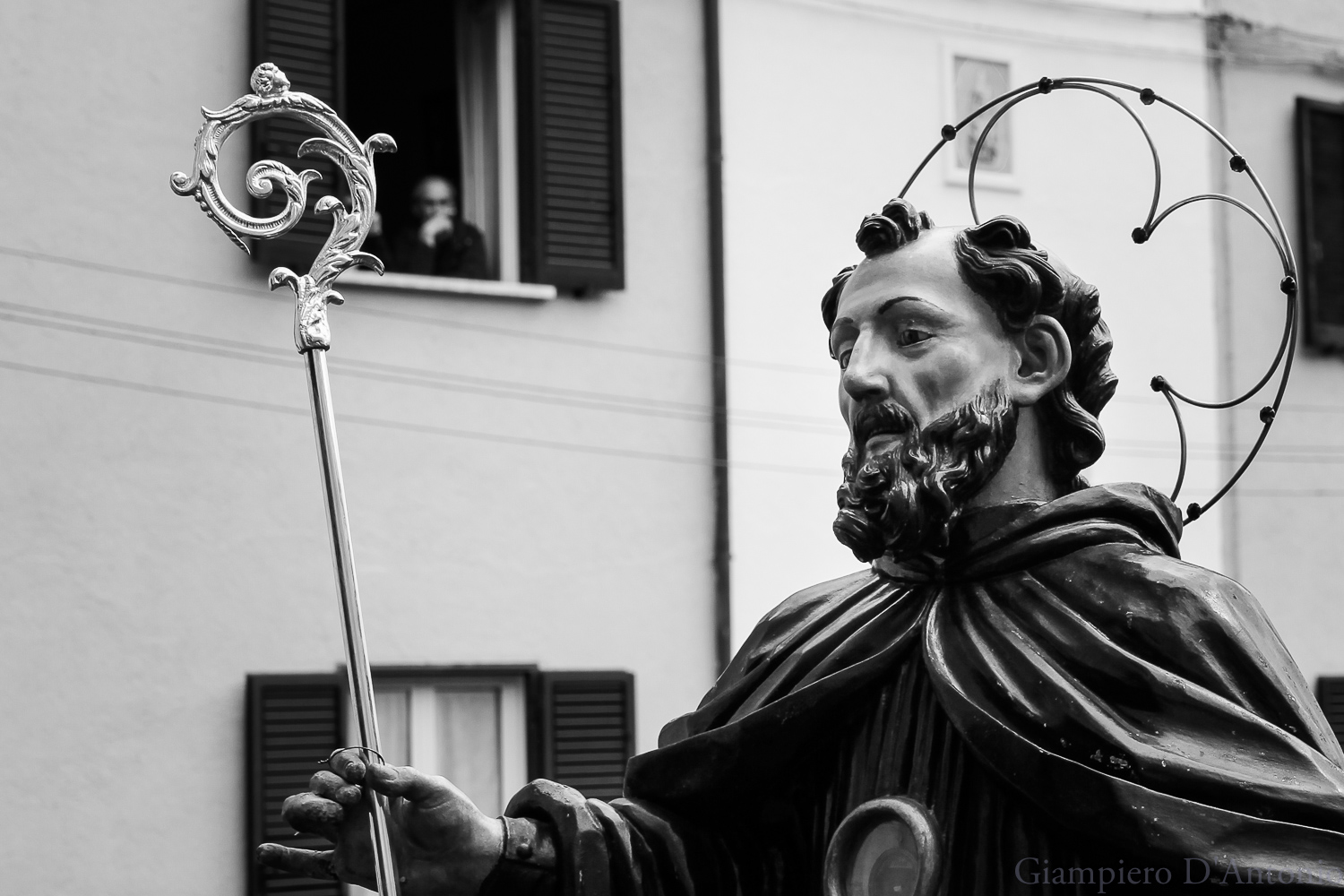The Running of the Bulls, Encierro, of Pamplona is the most famous of Spain, but not the only one. It is the highest profile event of the San Fermin festival, which is held every year from 6–14 July.The first bull running is on 7 July, followed by one on each of the following mornings of the festival, beginning every day at 8 am. The Encierro begins with runners singing a benediction, El Cantico, It is sung three times, each time being sung both in Spanish and Basque. The benediction is a prayer given at a statue of Saint Fermin, patron of the festival and the city, to ask the saint's protection. Though there is no formal dress code, the very common and traditional attire is white pants, white shirt with a red scarf around the waist and a red handkerchief around the neck. Despite The protests of pro-animal rights groups, the show go on. Normally On the eve of the festival, dozens of semi-naked activists try to draw attention at what they see as animal cruelty, only, for entertain the folks. Bullfights are protected under the Spanish Constitution as part of the country’s cultural heritage.
travel
Dhobi Khana /
We arrived in Veli in Fort Kochi, riding a beautiful Royal Enfield, a motorcycle with vintage charm, after a deep visit of Mattancherry. The first sight that greets Us inside the gate market Dhobi Khana is an array of men and women ironing clothes, some still use the traditional charcoal iron, some of these irons were bought decades ago in Sri Lanka.
The environment is pervaded by music and animated by slow and gentle gestures, which give life to this space.
Pass through into the next portion of the three-acre compound of the Khana, and you see, approximately, 40 wash pens lined up in a row dedicated to the washing of garments, acquiring life from the silent and laborious presence of these proud and kind dhobis.
The dhobis belong to the Vannar community of Tamil Nadu. Though there are different accounts about their settlement in Fort Kochi, it is widely believed that the settlement is more than three-centuries-old.
They use the traditional method of soaking the clothes in bleach and detergent water. Soaked clothes are washed by beating on a laundry stone. Starching the clothes is also done by dipping the clothes in starch obtained from boiled rice.
Next to the shed is a drying yard with cross poles and ropes. The washed clothes are left out to dry in the sun for almost five hours. The clothes are tucked in between ropes to secure them, thus avoiding the use of clips.
This is, probably, the only Dhobi Khana (community laundry space) in Kerala, existing in the city successfully for many decades, thanks to a fair number of Kochi citizens who prefer their clothes washed by hand.
They say that the process has remained unchanged for at least the last 40 years, but as with many older ways, most of the people at the dhobi khana say that theirs is a dying profession. Younger generations doesn’t like to pick up this job, They study and aim to have a different and more lucrative job.
Moreover the increasing expand of modern laundry , put the survival of this dhobi khana at risk in in the near future.
Religion and tradition: St Dominic Festival /
The festival of the serpents takes place in Cocullo, a little village in the hearth of Abruzzo, on 1 May. The festival is held in honour of Saint Dominic abbot who is particularly revered in Cocullo, but also to Villalago , why is the patron saint of both villages in Abruzzo, Italy.. Every year in May is celebrated in Cocullo an ancient rite, today transformed into a festival sacred - profane . It all starts with the hunt for snakes at the end of March outside the village. According to local tradition, the saint taking off the tooth and donating it to the people of Cocullo, it did result in a faith that came to supplant the pagan worship of the goddess Angizia , protector of the poisons, including that of snakes. In fact Cocullo preserves two relics of the saint: a molar and an iron of his mule The festival begins with the crowd begins to pull teeth with the bell of the chapel of St. Dominic, in the church of the same name. According to tradition, this ceremony would serve to protect your teeth from diseases that may afflict them. At noon, the procession of the statue of the saint, invaded by snakes captured days before, starts from the church of St Dominic and continues through the narrow streets of the historic center. At the sides of the statue of the saint, two girls dressed in traditional clothes, carry on their heads a basket containing five loaves called chamberlains in the sacred memory of a miracle which St. Dominic. These breads are donated, to ancient law, to the holders of the Sacred Image and of the banner. At the end of the festival, the reptiles are returned to their natural habitat. Cocullo, Abruzzo, Italy 1 May


